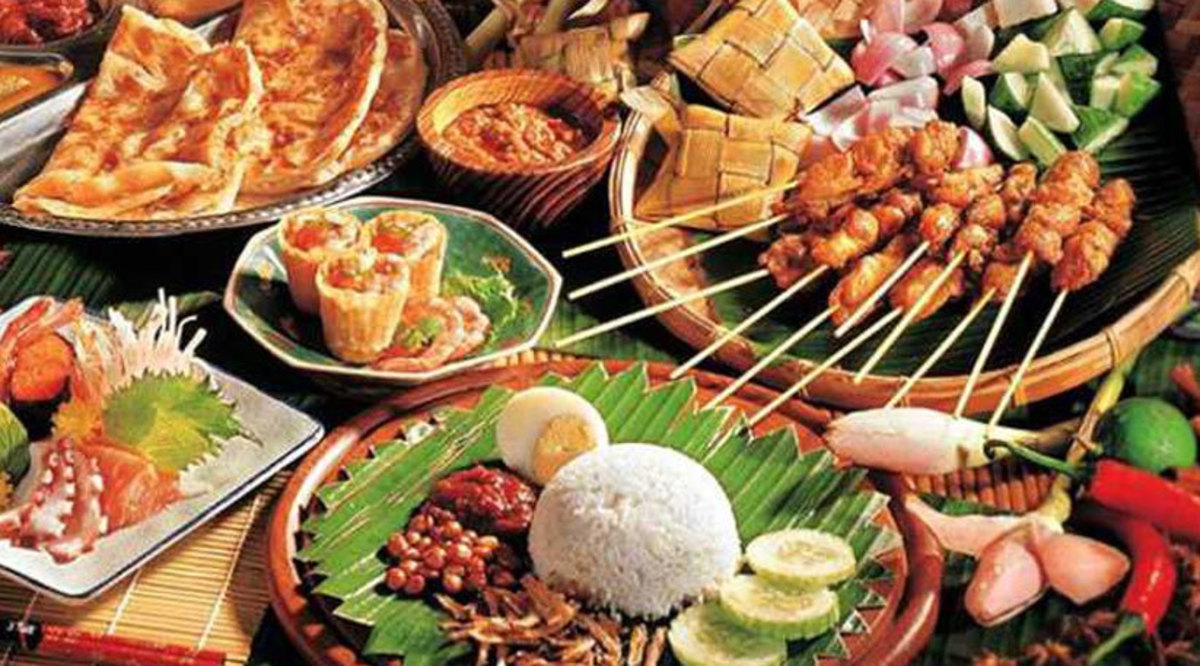Foodie Paradises in Malaysia
Are you ready for a gastronomic adventure that will tantalize your taste buds? Look no further than Malaysia, where food lovers are in for a treat! With its diverse cultural heritage and vibrant culinary scene, Malaysia is a paradise for food enthusiasts. From aromatic spices to mouthwatering street food, this Southeast Asian country offers an irresistible array of flavors and exquisite cuisine that will leave you craving for more.
In Malaysia, every bite tells a story. Indulge in the rich and fragrant delights of Nasi Lemak, a traditional dish that combines fragrant coconut rice, spicy sambal, crispy anchovies, and a variety of accompaniments. Sample the tangy and spicy flavors of Assam Laksa, a noodle soup with a tamarind-based broth infused with aromatic herbs and topped with fish flakes. Or perhaps, savor the succulent and tender Satay, skewered and grilled meat served with a delectable peanut sauce.
But these tantalizing dishes are just the tip of the iceberg. Malaysian cuisine is a melting pot of flavors influenced by Malay, Chinese, Indian, and indigenous traditions. Each region boasts its own specialty dishes, adding to the diversity and uniqueness of the culinary landscape. From bustling night markets to hidden gems in quaint villages, Malaysia offers a food adventure like no other.
Embark on a culinary journey through the bustling streets of Kuala Lumpur, explore the vibrant flavors of Penang’s famous hawker stalls, or venture into the charming heritage towns of Malacca and Ipoh to discover hidden culinary treasures. Get ready to be enchanted by the warm hospitality and mouthwatering delights that Malaysia has to offer. Join us as we dive into the depths of Malaysia’s foodie paradises and uncover the secrets of its irresistible flavors and exquisite cuisine.
So, are you ready to embark on a culinary expedition like no other? Let the flavors of Malaysia captivate your senses and leave you craving for more. Join us as we unravel the culinary tapestry of this remarkable country and delve into the world of delectable dishes and vibrant food cultures. Don’t miss out on this gastronomic adventure that awaits you in the foodie paradises of Malaysia!
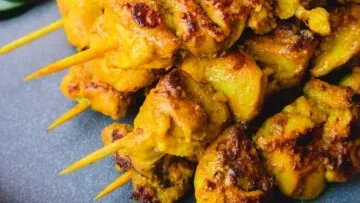
Please visit Reason to Travel Malaysia for detailed coverage. If you are planning to visit Malaysia, you will get a complete coverage on best islands of Malaysia here in ‘30 Best Malaysian Islands to Visit‘ and ‘Beyond Islands, Best Malaysian Cities to Visit‘
The Culinary Delights of Penang
Penang, often hailed as the food capital of Malaysia, offers a wide range of culinary delights. Explore the vibrant street food scene in George Town, where you can indulge in famous dishes like Char Kway Teow and Assam Laksa. Don’t miss the opportunity to taste the delectable Nasi Kandar, a local favorite that combines fragrant rice with a variety of curries.
Exploring the Food Markets of Kuala Lumpur
Kuala Lumpur, the capital city of Malaysia, is a food lover’s paradise. Dive into the bustling food markets such as Jalan Alor and Petaling Street, where you can savor a variety of Malaysian delicacies. Try the famous Roti Canai, a flaky and crispy bread served with flavorful curries, or indulge in the aromatic Satay, skewered meat served with a peanut dipping sauce.
Unveiling the Flavors of Melaka
Melaka, a UNESCO World Heritage Site, offers a unique blend of culinary traditions. Discover the Nyonya cuisine, a fusion of Chinese and Malay flavors, through dishes like Ayam Pongteh and Itik Tim. Don’t forget to try the refreshing Cendol, a dessert made with shaved ice, coconut milk, palm sugar, and green jelly.
Discovering the Gastronomic Treasures of Ipoh
Ipoh is renowned for its delectable local fare and charming old-town vibes. Sample the famous Ipoh Hor Fun, a rice noodle soup topped with tender chicken and prawns. Experience the traditional White Coffee, a specialty coffee roasted with margarine, which originated from Ipoh’s old town.
Journeying to the Food Haven of George Town
George Town in Penang is a food haven, offering a diverse range of culinary experiences. Embark on a food trail through the UNESCO-listed heritage site and taste iconic dishes like Hokkien Mee, a flavorful noodle dish, and Mee Goreng, a spicy fried noodle delight. Don’t miss the chance to try the delectable Penang Assam Laksa, a tangy and spicy fish-based noodle soup.
Indulging in the Cuisine of Langkawi
Langkawi, known for its stunning beaches, also offers a delightful culinary experience. Feast on freshly caught seafood at local restaurants, and try traditional Malay dishes like Nasi Dagang, a fragrant rice dish served with fish curry. Don’t forget to taste the local delicacies such as Kerabu, a refreshing salad with tangy flavors.
Exploring the Rich Culinary Heritage of Sabah
Sabah, located on the island of Borneo, is a treasure trove of culinary delights. Dive into the flavors of Sabahan cuisine with dishes like Hinava, a traditional raw fish salad, and Ambuyat, a unique staple made from sago palm starch. Experience the rich cultural heritage through food festivals such as the Sabah Fest, where you can indulge in a variety of traditional dishes.
Experiencing the Unique Tastes of Sarawak
Sarawak, another state on the island of Borneo, offers a gastronomic adventure with its unique indigenous flavors. Sample the famous Sarawak Laksa, a fragrant noodle soup with a spicy and tangy broth. Discover traditional dishes like Manok Pansoh, chicken cooked in bamboo, and Midin, a wild fern dish. Immerse yourself in the culinary traditions of the indigenous communities through their traditional food.
| Synopsis |
| The diverse and vibrant culinary landscape of Malaysia offers a paradise for food enthusiasts. From exploring the top foodie paradises and indulging in must-try dishes to savoring the exotic flavors and discovering hidden gems, Malaysia is a true food lover’s heaven. With a rich blend of Malay, Chinese, Indian, and indigenous influences, Malaysian cuisine tantalizes taste buds with its aromatic spices, vibrant colors, and unique culinary traditions. Capture the essence of this culinary journey through food photography and immerse yourself in the cultural customs and etiquette that make dining in Malaysia a truly memorable experience. |
Must-Try Dishes in Malaysia
When exploring the culinary wonders of Malaysia, there are certain dishes that you simply cannot miss. These iconic delicacies represent the rich and diverse flavors of the country.
Nasi Lemak: Malaysia’s Beloved National Dish
Nasi Lemak is a quintessential Malaysian dish that consists of fragrant coconut rice served with various accompaniments. The traditional version includes sambal (spicy chili paste), fried anchovies, peanuts, cucumber slices, and a hard-boiled egg. It’s a flavorful and satisfying meal that can be enjoyed for breakfast, lunch, or dinner.
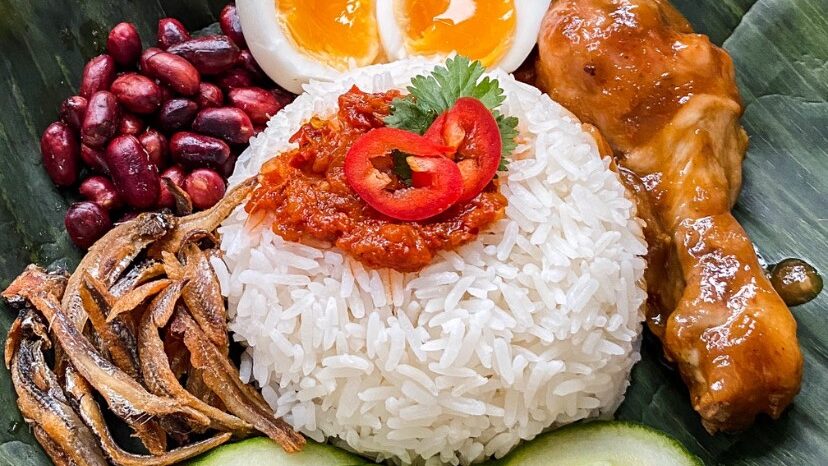
Roti Canai: A Flaky Malaysian Staple
Roti Canai is a popular Malaysian bread that originated from Indian influences. It is made by stretching and flipping the dough to create thin layers, resulting in a flaky and crispy texture. It is usually served with flavorful curry or dhal for dipping. Roti Canai is a staple breakfast or snack option enjoyed by Malaysians of all backgrounds.
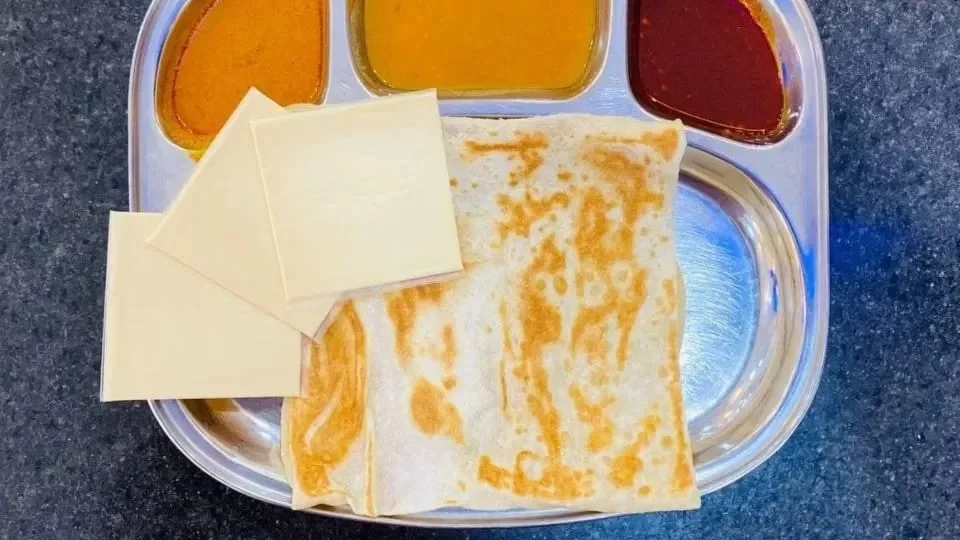
Char Kway Teow: Stir-Fried Noodles at Their Best
Char Kway Teow is a beloved Malaysian street food dish that features flat rice noodles stir-fried with a combination of ingredients such as shrimp, bean sprouts, Chinese sausage, and eggs. The dish is cooked in a hot wok to achieve a smoky flavor and is often seasoned with soy sauce and chili paste. Char Kway Teow is a must-try for noodle lovers seeking bold and robust flavors.
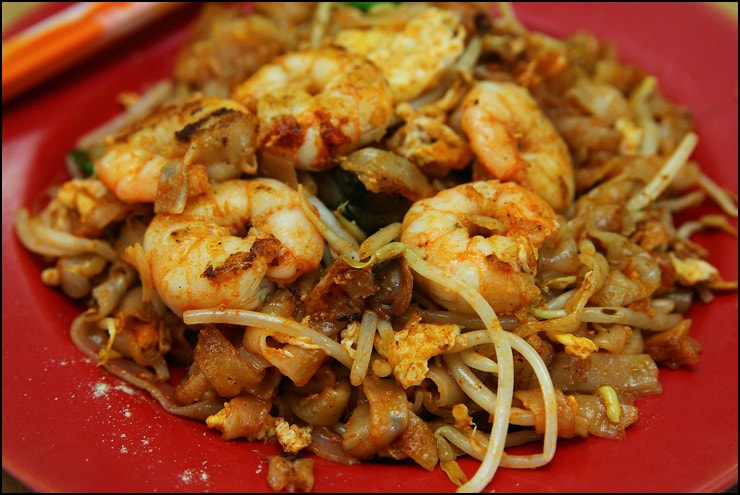
Satay: Skewered Delights with Peanut Sauce
Satay is a popular Malaysian dish consisting of skewered and grilled meat, usually chicken or beef, served with a fragrant peanut dipping sauce. The meat is marinated in a blend of spices and then grilled over charcoal, imparting a smoky aroma. Satay is often enjoyed as an appetizer or as part of a meal, and the combination of tender meat and savory peanut sauce is a taste sensation.
Laksa: A Spicy and Flavorful Noodle Soup
Laksa is a spicy noodle soup that varies in style and flavor across different regions of Malaysia. The most well-known types include Penang Laksa and Sarawak Laksa. Penang Laksa features a tangy and fish-based broth, while Sarawak Laksa is characterized by its aromatic and complex flavors. Both variations are packed with ingredients such as rice noodles, shrimp paste, herbs, and spices, creating a flavorful and satisfying dish.
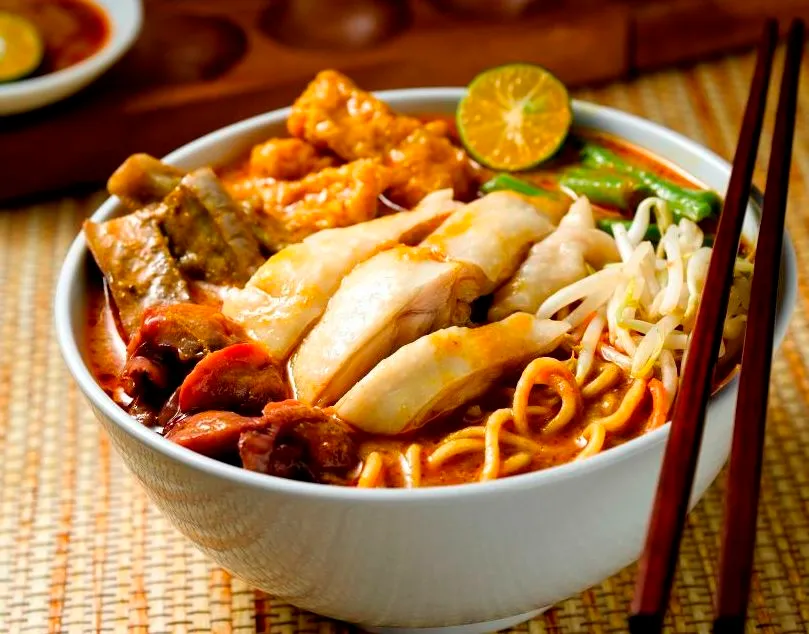
Rendang: Slow-Cooked Meat in Fragrant Spices
Rendang is a slow-cooked meat dish that originated from the Minangkabau people of Sumatra, Indonesia, but has become a beloved dish in Malaysia. The meat, typically beef or chicken, is simmered in a mixture of coconut milk and spices for hours until it becomes tender and infused with rich flavors. Rendang is a celebratory dish often served during festive occasions and is known for its complex blend of spices.
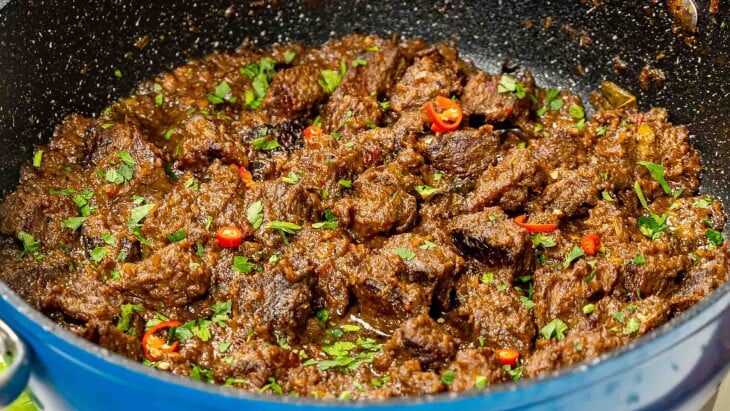
Cendol: A Refreshing Dessert to Beat the Heat
Cendol is a popular Malaysian dessert that offers a refreshing respite from the tropical heat. It consists of pandan-flavored rice flour jelly strips, served over shaved ice, sweetened coconut milk, and palm sugar syrup. Additional toppings such as red beans and sweet corn may be added for extra texture and flavor. Cendol is a delightful treat that brings a cool and sweet satisfaction on a hot day.
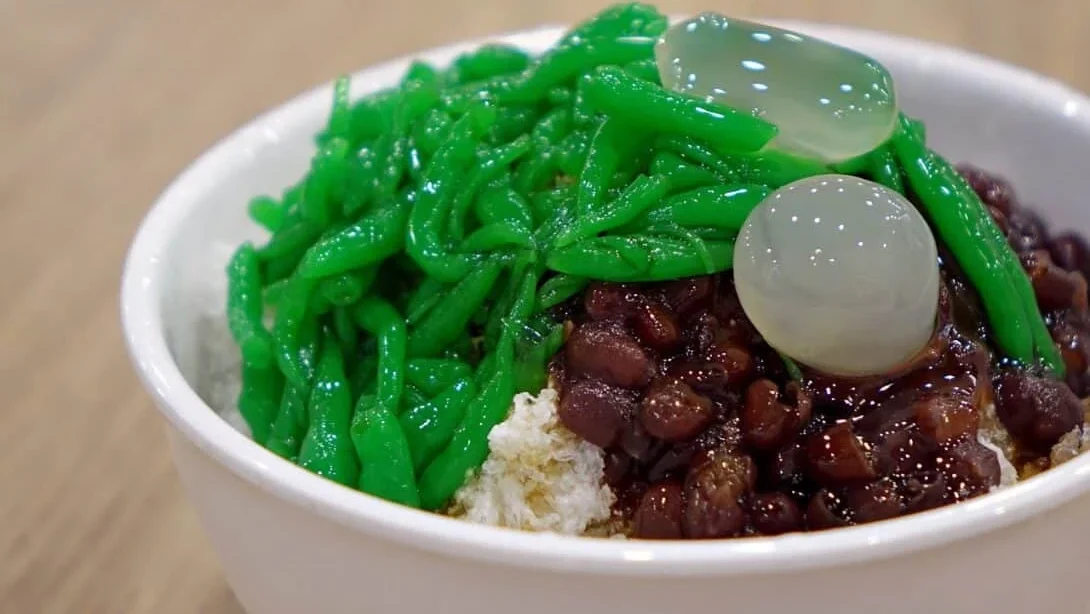
Teh Tarik: Malaysia’s Iconic Pulled Tea
Teh Tarik, which translates to “pulled tea,” is a favorite Malaysian beverage enjoyed by locals and visitors alike. It is made by vigorously pouring and “pulling” the tea between two cups, creating a frothy and creamy texture. Teh Tarik is usually sweetened with condensed milk and has a distinctively rich and robust flavor. It is commonly served hot and is a staple at Malaysian kopitiams (coffee shops).
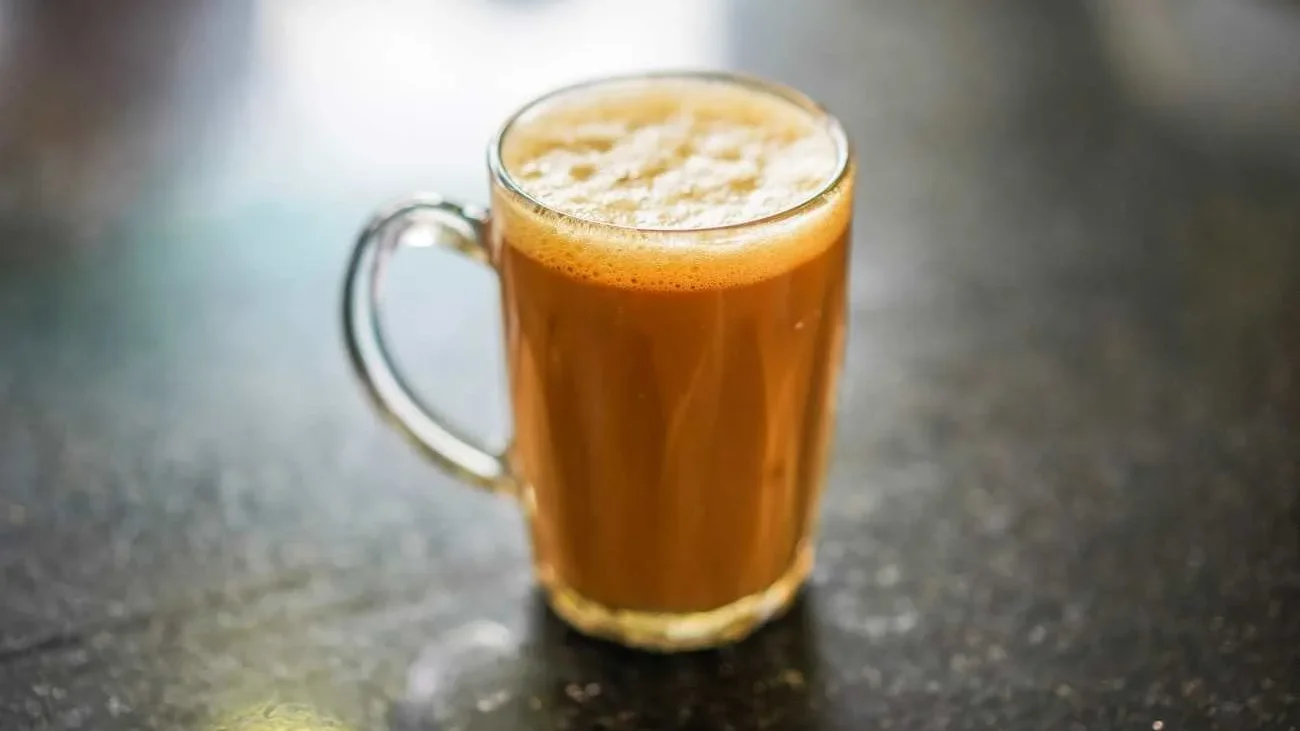
Savoring the Exotic Flavors of Malaysia
Malaysia’s culinary landscape is a melting pot of flavors influenced by its diverse cultural heritage. Exploring the country’s exotic flavors is a journey that reveals the unique taste combinations and aromatic spices that define Malaysian cuisine.
Malay Cuisine: A Blend of Rich and Spicy Flavors
Malay cuisine is the foundation of Malaysian food culture, known for its rich and spicy flavors. The use of aromatic spices such as lemongrass, turmeric, and galangal creates a distinct taste profile. Malay dishes often feature coconut milk, resulting in creamy and savory flavors. Indulge in classics like Nasi Goreng, a flavorful fried rice, or Rendang, a slow-cooked meat dish with a complex blend of spices.
Chinese Influence on Malaysian Gastronomy
Chinese cuisine has played a significant role in shaping Malaysian gastronomy. From Hokkien, Cantonese, and Hakka to Teochew and Hainanese influences, Chinese dishes have become an integral part of the Malaysian culinary scene. Savor dishes like Hainanese Chicken Rice, a fragrant poached chicken served with flavorful rice, or Dim Sum, a variety of bite-sized delicacies steamed to perfection.
Indian Delicacies in Malaysia: A Fusion of Flavors
Indian cuisine has made a flavorful impact on Malaysian food, particularly through the Indian-Muslim community known as Mamak. Enjoy dishes like Roti Canai, Biryani, and Tandoori Chicken, which reflect the vibrant and aromatic flavors of Indian cuisine. The fusion of Indian and Malaysian culinary traditions has resulted in unique dishes like Banana Leaf Rice, where fragrant rice is served on a banana leaf alongside an array of curries and condiments.
Nyonya Cuisine: The Marriage of Chinese and Malay
Nyonya cuisine, also known as Peranakan cuisine, is a blend of Chinese and Malay flavors that emerged from the intermarriage of Chinese immigrants and local Malays. Nyonya dishes are known for their intricate preparation methods and complex flavors. Indulge in dishes like Ayam Pongteh, a hearty chicken stew with fermented soybean paste, or NyonyaKuih, delicate and colorful traditional desserts. Nyonya cuisine is a testament to the harmonious fusion of Chinese and Malay culinary traditions.
Indigenous Culinary Traditions of Malaysia
The indigenous communities in Malaysia have their own distinct culinary traditions, showcasing the country’s rich cultural diversity. Explore the flavors of the Orang Asli, the indigenous people of Peninsular Malaysia, and savor dishes like Pucuk Ubi Masak Lemak, a traditional vegetable dish cooked in coconut milk. In Borneo, discover the unique flavors of dishes like Pinasakan, a tangy and spicy fish stew prepared by the Kadazan-Dusun community.
| Takeaway | Description |
|---|---|
| Malaysian Cuisine | Explore the rich flavors of Malay, Chinese, and Indian influences in Malaysian cuisine. From Nasi Lemak to Roti Canai, experience a diverse culinary journey. |
| Foodie Paradises | Discover the top foodie paradises in Malaysia, including Penang, Kuala Lumpur, Melaka, and more. Indulge in the vibrant street food, iconic dishes, and unique flavors that make Malaysia a food lover’s haven. |
| Exotic Flavors | Savor the exotic flavors of Malaysia through aromatic spices, herbs, and indigenous ingredients. Experience the fusion of Malay, Chinese, Indian, and indigenous culinary traditions that create a tantalizing culinary tapestry. |
| Dining Etiquette | Familiarize yourself with Malaysian dining customs and etiquette. Learn about eating with your hands, sharing dishes, and other cultural practices that will enhance your dining experience in Malaysia. |
| Hidden Gems | Uncover hidden gems for food enthusiasts in Malaysia. Explore lesser-known food spots, off-the-beaten-path eateries, and local markets to discover authentic and undiscovered flavors that will delight your taste buds. |
| Food Photography Tips | Master the art of capturing Malaysian cuisine through food photography. Learn techniques for lighting, composition, and styling that will bring out the vibrant colors and enticing textures of Malaysian dishes in your photographs. |
Food Lover’s Guide to Malaysia
Malaysia’s vibrant food culture goes beyond just the flavors—it encompasses dining etiquette, food customs, and exciting food festivals. Here’s a guide to fully immerse yourself in the Malaysian culinary experience.
Exploring Malaysia’s Food Culture
Delve into Malaysia’s rich food culture by exploring its diverse culinary heritage. Visit local markets, hawker centers, and restaurants to sample an array of dishes. Engage with locals and learn about the cultural significance of certain foods. From street food to fine dining, Malaysia offers something for every food lover.
Dining Etiquette and Food Customs in Malaysia
When dining in Malaysia, it’s important to be mindful of local customs and etiquette. Malaysians often eat with their hands, especially when enjoying dishes like Nasi Lemak or Banana Leaf Rice. It is also customary to share dishes among the dining party, fostering a sense of community and togetherness. Taking off your shoes before entering someone’s home is a sign of respect, and it’s polite to wait for the host to begin eating before you start.
Top Food Festivals and Events in Malaysia
Immerse yourself in Malaysia’s vibrant food festival scene, where you can experience the country’s culinary delights in a festive atmosphere. The George Town Festival in Penang celebrates art and culture, with a significant focus on food. The Kuala Lumpur Food Festival is a must-visit for food enthusiasts, featuring a wide range of food stalls and live performances. Don’t miss the Ramadan Bazaars during the holy month of Ramadan, where you can indulge in an array of traditional Malay dishes.
Street Food in Malaysia: A Gastronomic Adventure
Embark on a gastronomic adventure through Malaysia’s bustling street food scene. From the night markets of Kuala Lumpur to the hawker stalls of Penang, you’ll find an abundance of flavors and aromas. Sample dishes like Apam Balik, a fluffy pancake filled with crushed peanuts and sweet corn, or Curry Mee, a spicy noodle soup with a medley of ingredients. Street food in Malaysia offers a truly authentic and immersive culinary experience.
Hidden Gems: Lesser-Known Food Spots in Malaysia
While popular food destinations in Malaysia are well-known, there are also hidden gems that offer unique culinary experiences. Venture off the beaten path and discover lesser-known food spots where you can savor local favorites away from the crowds. Whether it’s a small seafood shack by the beach or a family-run restaurant in a hidden alley, these hidden gems provide an opportunity to taste authentic and undiscovered flavors.
Malaysian Food Souvenirs: Bring the Flavors Home
Bring a piece of Malaysia’s culinary heritage back home with you by purchasing food souvenirs. From spices and sauces to traditional snacks and sweets, there are plenty of options to choose from. Popular choices include belacan (shrimp paste), sambal paste, and local tea blends. These food souvenirs allow you to recreate the flavors of Malaysia in your own kitchen and share them with family and friends.
Taste the Essence of Malaysia: Foodie’s Heaven!
Malaysia truly lives up to its reputation as a foodie’s heaven, offering a tantalizing array of flavors and culinary experiences. To make the most of your food journey in Malaysia, here are some tips and insights to guide you.
Malaysia’s Culinary Tourism: A Feast for the Senses
Culinary tourism is on the rise in Malaysia, as visitors from around the world flock to experience the country’s vibrant food scene. Embark on a culinary adventure and immerse yourself in the sights, sounds, and tastes of Malaysia. Join food tours, cooking classes, and cultural experiences to gain a deeper understanding of the local cuisine and its cultural significance.
Planning Your Foodie Itinerary in Malaysia
With so much to explore, planning your foodie itinerary in Malaysia is essential. Research the local specialties of each region and include must-visit food spots in your travel plans. Balance your meals by sampling street food, dining at local eateries, and indulging in fine dining experiences. Don’t forget to allocate time for food markets, food festivals, and cultural events that showcase the best of Malaysian cuisine.
Exploring Traditional Malaysian Ingredients
One of the joys of Malaysian cuisine is the abundance of unique ingredients. Dive deeper into the local flavors by exploring traditional Malaysian ingredients. From exotic fruits like durian and rambutan to aromatic herbs and spices like lemongrass, ginger, and turmeric, each ingredient adds its own distinct touch to the cuisine. Visit local markets to see these ingredients in their fresh and vibrant form.
Embracing the Diversity of Malaysian Cuisine
Malaysia’s culinary landscape is a reflection of its diverse population and cultural heritage. Embrace the diversity of Malaysian cuisine by trying dishes from different ethnic groups and regions. From Malay, Chinese, and Indian to indigenous and Peranakan cuisines, each offers a unique experience. Be open to trying new flavors, and you’ll discover the richness and complexity of Malaysian gastronomy.
Iconic Restaurants and Chefs in Malaysia
Malaysia boasts a growing number of world-class restaurants and talented chefs who have put the country on the global culinary map. Seek out iconic restaurants that offer innovative takes on Malaysian cuisine or fusion creations that blend traditional flavors with modern techniques. Indulge in a gastronomic experience curated by renowned chefs, and savor the artistry and passion that goes into each dish.
Health and Wellness Trends in Malaysian Food
As the world becomes more health-conscious, Malaysia’s food scene is adapting to incorporate health and wellness trends. From plant-based and vegetarian options to gluten-free and organic choices, you’ll find a variety of dishes that cater to different dietary preferences. Explore health-conscious cafes, farm-to-table restaurants, and wellness retreats that offer nourishing and wholesome Malaysian cuisine.
Food Photography Tips for Capturing Malaysian Delights
Capture the vibrant colors and mouth-watering dishes of Malaysian cuisine through food photography. Use natural lighting to showcase the beauty of the food, and experiment with angles and composition to create visually appealing images. Don’t be afraid to get close and capture the intricate details. Whether you’re using a smartphone or a professional camera, these tips will help you capture the essence of Malaysian delights.
The Future of Malaysian Food: Culinary Innovations
As Malaysia continues to evolve, so does its culinary landscape. Stay updated on the latest culinary trends and innovations that are shaping the future of Malaysian food. From fusion creations to innovative cooking techniques, there’s always something new to discover. Keepan eye out for emerging chefs, food festivals, and culinary events that showcase the cutting-edge developments in Malaysian gastronomy.
Frequently Asked Questions (FAQs)
What are the must-visit foodie paradises in Malaysia?
Malaysia has several must-visit foodie paradises, including Penang, Kuala Lumpur, Melaka, Ipoh, George Town, Langkawi, Sabah, and Sarawak. Each destination offers unique culinary experiences and a wide range of delicious dishes to try.
Which dishes should I try during my culinary adventures in Malaysia?
During your culinary adventures in Malaysia, be sure to try dishes like Nasi Lemak, Roti Canai, Char Kway Teow, Satay, Laksa, Rendang, Cendol, and Teh Tarik. These dishes represent the diverse flavors and culinary traditions of Malaysia.
What are the exotic flavors of Malaysia that I should savor?
Malaysia is known for its exotic flavors, influenced by Malay, Chinese, Indian, and indigenous culinary traditions. Some exotic flavors to savor include the aromatic spices used in Malay cuisine, the vibrant herbs and ingredients in Chinese dishes, the bold spices in Indian delicacies, and the unique flavors of indigenous ingredients.
Can you provide a food lover’s guide to Malaysia?
Absolutely! A food lover’s guide to Malaysia would include exploring food markets, trying street food, visiting iconic restaurants, participating in food festivals, learning about dining etiquette, discovering hidden gems, and immersing oneself in the diverse culinary traditions of the country.
Is Malaysia truly a foodie’s heaven?
Yes, Malaysia is indeed a foodie’s heaven! With its diverse cultural influences, rich flavors, and wide variety of dishes, Malaysia offers a culinary experience that is sure to satisfy any food lover’s cravings.
Are there any specific dining customs or etiquette in Malaysia?
Yes, Malaysia has specific dining customs and etiquette. It is common to eat with your hands, especially when enjoying dishes like Nasi Lemak or Banana Leaf Rice. Sharing dishes is customary, and it’s polite to wait for the host to begin eating before you start. Taking off your shoes before entering someone’s home is a sign of respect.
What are some hidden gems for food enthusiasts in Malaysia?
Malaysia has many hidden gems for food enthusiasts. Some examples include lesser-known food stalls or restaurants tucked away in alleys or local neighborhoods, where you can find authentic and undiscovered flavors. Exploring smaller towns and rural areas also often leads to hidden culinary treasures.
How can I capture the essence of Malaysian cuisine through food photography?
To capture the essence of Malaysian cuisine through food photography, use natural lighting to highlight the vibrant colors of the dishes. Experiment with angles and composition to create visually appealing images. Focus on the intricate details and textures of the food. Additionally, try to convey the cultural context of the dish by incorporating elements of the Malaysian food culture in the background or props.
Conclusion
Malaysia’s top foodie paradises offer a feast for the senses, with a rich tapestry of flavors, aromas, and cultural influences. From the bustling streets of Penang to the vibrant markets of Kuala Lumpur, the country’s culinary adventures await. Savor the must-try dishes, explore the exotic flavors, and immerse yourself in the food lover’s guide to Malaysia. Experience the essence of Malaysia, a true foodie’s heaven where every bite tells a story and every meal is a celebration of the country’s vibrant culinary heritage.
Note:
Please click here to read other stories.
If you are from the US, please refer to Print On Demand T-shirts with a huge discount.
Are you a Travel Enthusiastic? Please refer to this YouTube Channel.
Are you a Crypto Enthusiastic? Please refer to this YouTube Channel.
